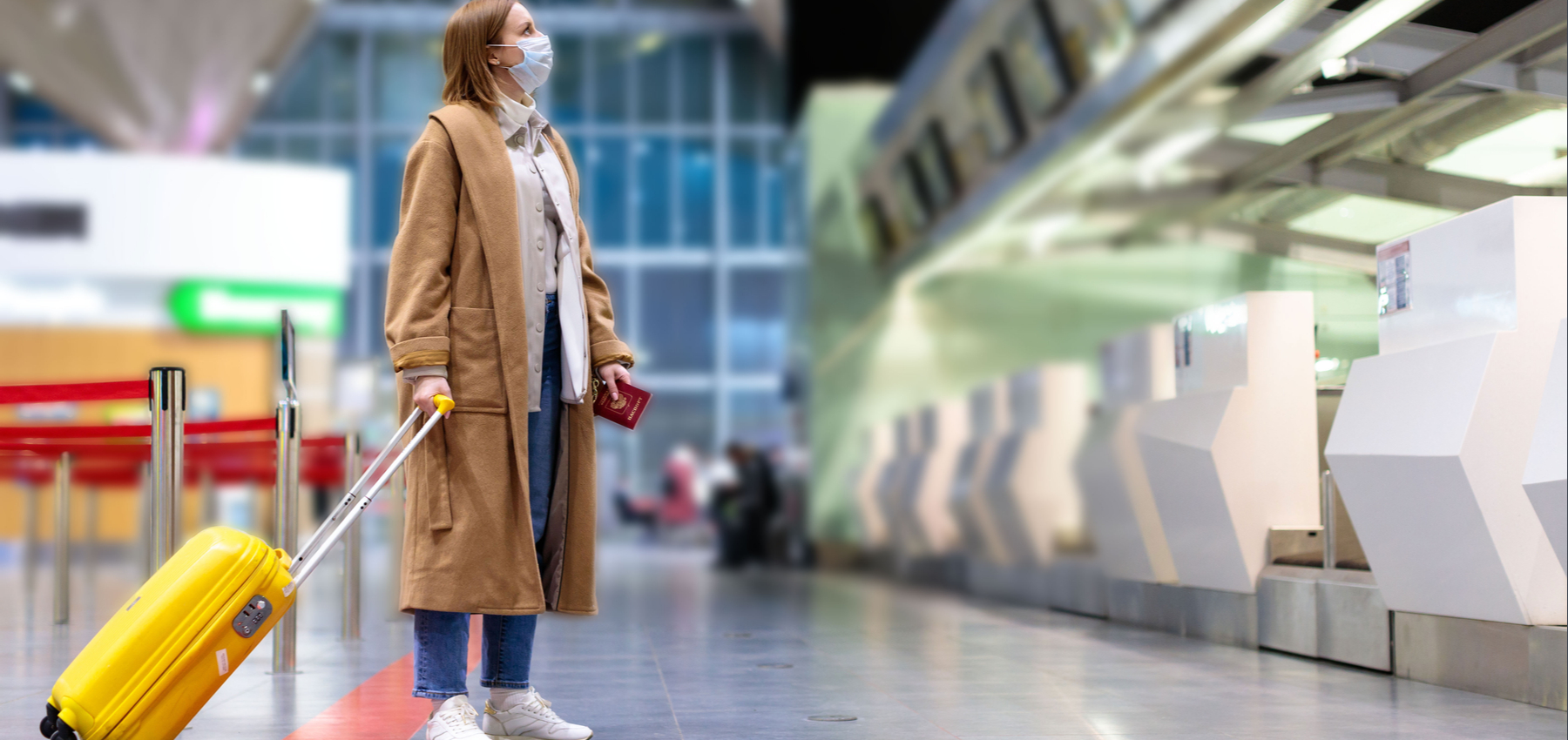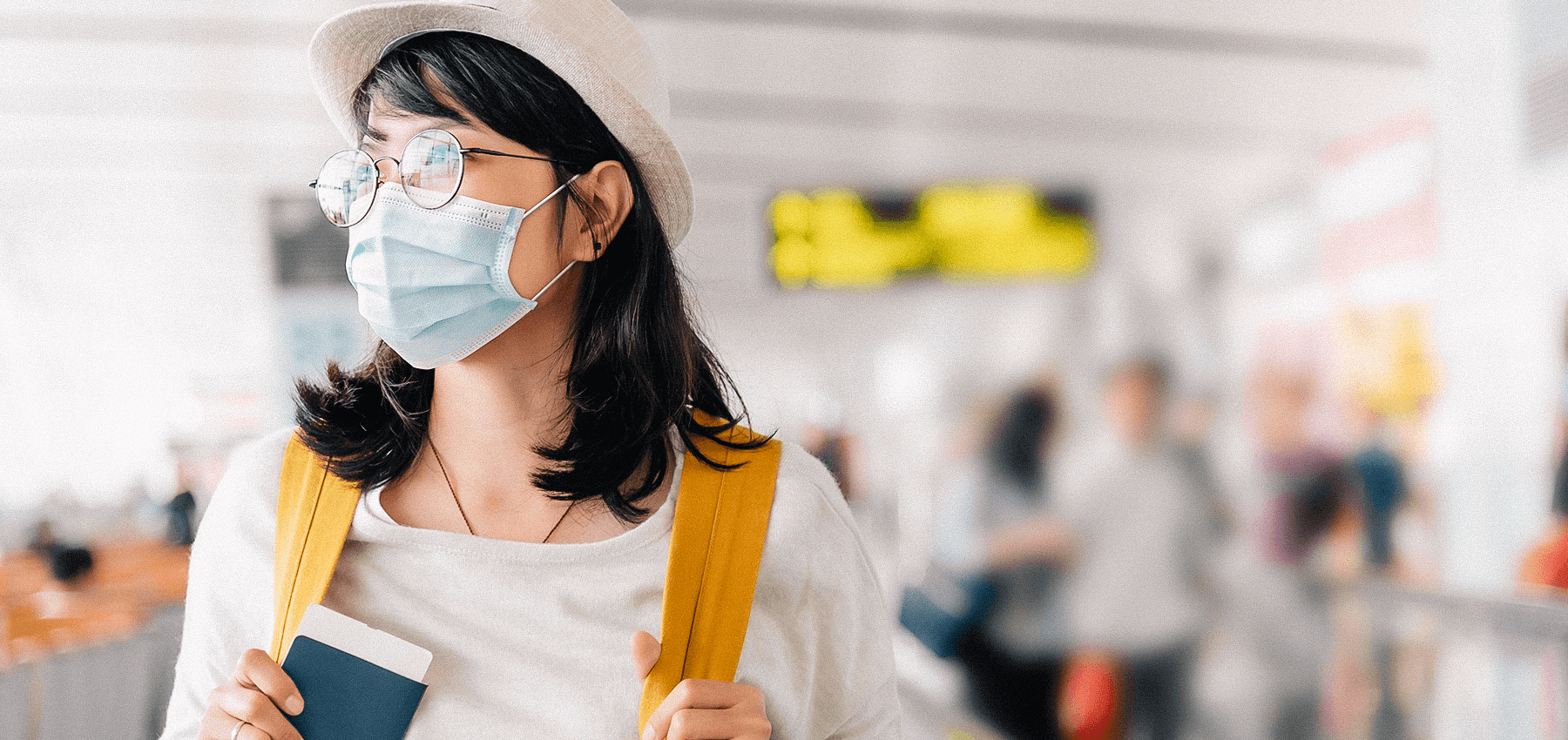Last updated: November 30, 2022
Effective October 2022, the Government of Canada has removed all COVID-19 related travel restrictions, including vaccination and testing requirements, quarantine, the mandatory use of ArriveCAN, and masking in public places. However, as the pandemic evolves, travel restrictions may continue to be updated, so please check the government’s website for up-to-date information.The information available in this article is no longer valid. |
The coronavirus (COVID-19) pandemic altered the way we live, work, and conduct our daily activities. Like many other nations in the world, Canada enforced a variety of restrictions and guidelines to control and prevent the spread of the disease.
As businesses temporarily closed down and everyone stayed home, newcomers who had recently moved to Canada as well as those who were planning to move soon have been greatly impacted. Now, after approximately nine months since the first lockdown, the economy and businesses in Canada are starting to reopen and life is slowly getting back to normal.
In this article, we hope to provide a consolidated overview of all the information, resources, and tips that will help you understand what to expect once you arrive in Canada and hence, be better prepared for your move.
|
For all latest updates, please see Government guidelines and restrictions for travel to Canada. |
Arriving in Canada: Entry eligibility and admission criteria
All international flights are restricted to four airports in Canada: Vancouver, Calgary, Toronto and Montreal. If you’re travelling by air, you need to follow all airline requirements (including wearing a non-medical mask) and pass a health check conducted by airlines before you’re allowed to board your flight. Anyone with symptoms of COVID-19 is not allowed to enter Canada by air.
As per the guidelines outlined by the government of Canada, you may be able to enter Canada if you are:
- A permanent resident (PR) whose application was issued before March 18, 2020.
- A PR’s spouse, common-law partner and/or child and were included in the PR application that was issued before March 18, 2020.
- An immediate family member (spouse, common-law partner, dependent child, grandchild, parent, step-parent, guardian, or tutor) of a PR or Canadian citizen who is living in Canada.
- An international student whose study permit was approved before March 18, 2020.
- A temporary foreign worker with a valid work permit and job offer.
| Tip: If your PR application is approved, but you can’t travel to Canada before your documents expire, IRCC will contact you (if they haven’t already) to inquire if you’re able to travel to Canada. Once they approve you to come to Canada, they will issue you the documents you need to travel. |
|---|
To learn more about entry eligibility, see Immigration to Canada in times of COVID-19: Your questions answered, which features responses from authorized immigration consultants.
Admission criteria to be met:
- You must be coming to Canada to settle permanently (you cannot come to Canada and leave to go live in another country, even if it’s temporary).
- Effective January 7, 2021, all air passengers five years of age or older are required to test negative for COVID-19 before travelling to Canada. Documentation of a negative COVID-19 molecular polymerase chain reaction (or PCR) test result must be presented to the airline prior to boarding a flight to Canada. The test must be taken within 72 hours prior to the traveller’s scheduled departure to Canada. Please note that everyone with a negative test result authorized to enter Canada, is required to have a quarantine plan and must still complete the full, mandatory 14-day quarantine. More details are available in the news release by Transport Canada.
- Even if you have no symptoms, it is mandatory to have a quarantine plan that shows how you’ll quarantine for 14 days when you arrive in Canada. A quarantine plan should include:
- A place where you will be staying,
- How you will get to your destination from the airport,
- How you will get your groceries, and
- How you will access essential services and medical care
- Individuals reuniting with an immediate family member who lives in Canada:
- Have to provide evidence that their travel is essential and non-discretionary (in addition to staying in Canada for at least 15 days).
- Present proof that you’re an immediate family member of a Canadian citizen or Canadian permanent resident. Note: Paper and electronic copies of the documents are accepted.
- You do not need a written authorization from IRCC confirming that you are exempt from the travel restrictions.
- Individuals reuniting with an immediate family member who is living in Canada temporarily (such as international students or temporary foreign workers):
- Have to provide evidence that their travel is essential and non-discretionary (in addition to staying in Canada for at least 15 days).
- Need to show proof that you’re an immediate family member of a Canadian citizen or Canadian permanent resident.
- Must have written authorization from IRCC to fly to Canada. To obtain authorization, email IRCC at IRCC.COVID-TravelExemptions-Exemptionsdevoyage-COVID.IRCC@cic.gc.ca (for those travelling from outside the U.S.).
As of November 21, 2020, you will be required to submit your travel and contact information, quarantine plan, and COVID-19 symptom self-assessment electronically through the ArriveCAN mobile app before you board your flight. You must be ready to show your ArriveCAN receipt when seeking entry into Canada; a border services officer will verify that you have submitted the information digitally. If you do not submit the required information digitally before boarding the flight, you could be subject to enforcement action, which can range from verbal warnings to $1,000 CAD fine.
Here are a few things to note for your arrival in Canada:
- Wear a non-medical mask or face covering that covers your mouth and nose.
- Be ready to pass two health checks:
- Conducted by the airline before boarding your flight.
- Conducted by a Public Health Agency of Canada officer once you arrive in Canada.
- Have a quarantine plan ready to be shared with the border services officer. This plan is mandatory, even if you have no symptoms.
- Stay updated about the face covering requirements for air travellers.
- Ensure you can provide the method of contact once you arrive in Canada so that authorities can reach you. For example, WhatsApp, Canadian phone number, etc.
Upon arrival in Canada, at the airport, you must:
- Provide basic information using the traveller contact information form, available through:
- Be screened by a border services officer or quarantine officer to assess symptoms
Notes:
- The Canadian government does not provide a place to quarantine when you arrive in Canada. You need to make your own arrangements in advance.
- Provinces and territories may have their own travel restrictions. Before you travel, check the official website of your province or territory of destination.
Post-arrival protocols
- You are required to submit COVID-19 related information electronically daily through the ArriveCAN app.
- As per new travel restrictions announced on January 29, 2021, all air travellers arriving in Canada, with very limited exceptions, must reserve a room in a Government of Canada-approved hotel for three nights at their own cost, and take a COVID-19 molecular test on arrival at their own cost. The hotel quarantine requirement is expected to cost each traveller upwards of $2,000 CAD. All hotels will be located near one of the four Canadian airports currently accepting international flights. Travellers will be responsible for all associated costs, such as: hotel room, food, security, infection control, and transportation. The start date for this measure hasn’t been announced yet; more details and the complete list of hotels will be available in the coming days.
- Screening Officers working with the Public Health Agency of Canada (PHAC) will visit travellers’ quarantine locations to establish contact, confirm identity and confirm that travellers are at the place of quarantine they identified upon entry into Canada. Officers will conduct visits in 35 cities across the country, starting in Montréal and Toronto.
- Failure to provide accurate information and/or violating any quarantine or isolation instructions provided to travellers by a Screening Officer or quarantine officer when entering Canada is also an offence under the Quarantine Act and could lead to serious penalties, including six months in prison and/or $750,000 CAD in fines.
Note: Dedicated lanes for faster processing for ArriveCAN users are available at some major international airports (Vancouver, Calgary, Toronto, and Montréal). ArriveCAN does not use any technology or data, such as GPS, to monitor or track traveller movements. Your privacy is protected. For more details, refer to the announcement from the Public Health Agency of Canada.
Quarantine guidelines for newcomers arriving in Canada
Before travelling to Canada, you must plan for your mandatory 14-day quarantine period, starting on the day you arrive. Even if you don’t have COVID-19 symptoms, you must quarantine for 14 days while you’re still at risk of developing symptoms and infecting others.
Should you develop symptoms or test positive for COVID-19 during your 14-day quarantine, you must begin isolating for an additional 14 days from the date of your positive test result or onset of symptoms.
Where not to quarantine
Do not quarantine in places where you can’t separate yourself from those who live with you. For example:
- In a group or communal living setting;
- In a household with large families or many people;
- In a shared a small apartment, or have roommates who have not travelled with you; or
- At a camp or other group setting where there is close contact and shared common spaces.
- In a household with vulnerable people, such as those who:
- Are 65 years or older,
- Have underlying medical conditions, or
- Have compromised immune systems.
Monitor your health for 14 days
If you start experiencing any symptoms of COVID-19 (new or worsening cough, shortness of breath, fever equal to or greater than 38 degree Celsius, chills, fatigue or weakness, muscle or body aches, new loss of smell or taste, headache, gastrointestinal symptoms like abdominal pain, diarrhea, vomiting; or feeling very unwell), isolate yourself from others and follow the COVID-19 instructions of the local public health authority.
What you can and cannot do during your 14-day quarantine
The following is prohibited during quarantine:
- Leaving your place of quarantine unless it is to seek time-sensitive medical services.
- Having guests over even if you are outside and stay two metres apart.
- Using shared spaces such as lobbies, courtyards, restaurants, gyms or pools.
The following is permitted during quarantine:
- Living with family or friends who didn’t travel with you, provided you have a separate bedroom and bathroom, if possible.
- Using shared spaces such as a kitchen, provided you:
- Limit interactions with others in the household and wear a mask or face covering if a two-metre distance cannot be maintained;
- Thoroughly and regularly clean common areas after use.
- Using private outdoor spaces (such as a balcony), provided you avoid contact with others who didn’t travel with you.
The following is recommended during quarantine:
- Washing your hands often with soap and warm water or using an alcohol-based hand sanitizer that contains at least 60 per cent alcohol.
- Avoiding touching your face.
- Covering your mouth and nose with your arm when you cough or sneeze.
Note: You may be called from 1-888-336-7735 to verify your compliance during your 14-day quarantine. If federal and provincial/territorial quarantine guidelines differ, you should follow the most precautionary and stringent requirements.
The penalties for not following your quarantine plan once you’re in the country can include:
- A fine of up to $750,000 CAD
- Six months of jail time
- Upon being found inadmissible, you may be removed from Canada and banned from entering for one year
| Tips for your quarantine plan:
Accommodation:
Transportation:
Groceries, cleaning supplies, and essential items:
Payment options:
|
|---|
Completing newcomer landing formalities while in quarantine
Once you arrive at your accommodation in Canada, most newcomers are worried about various landing formalities that they need to complete. Here’s a brief overview of the current mandates (as of June 30, 2020) for various tasks.
1. Get a Social Insurance Number (SIN)
Depending on your arrival airport in Canada, you may be able to get your SIN at the airport. This service is currently provided for newcomers at Toronto Pearson International Airport and Vancouver International Airport during business hours on weekdays.
If you are unable to get your SIN at the airport or if your arrival airport that does not offer SIN services, you have the option to apply online or by mail:
- For applying online: Read the application guide and apply online.
- By mail: Complete a physical copy of the form and mail it to Service Canada with the required original documents. After verification, your documents will be returned to you by mail.
If your SIN application meets the requirements, you will receive a letter with your SIN by mail within 20 business days from the date the application is received. If more than 25 business days have passed, and you would like to find out the status of your application, you can contact the SIN program for an update.
2. Open a bank account
As a newcomer, you want a trusted partner who understands your banking needs. RBC (Canada’s largest bank*) has been such a partner to newcomers for 150 years. It’s why they support everything we do at Arrive.
|
Book an appointment with an RBC Advisor to learn more about opening an RBC newcomer bank account remotely while in quarantine. |
To open a newcomer bank account with RBC, you will require the following documents:
- Your passport
- CoPR and/or Social Insurance Number (SIN) or proof of residence (optional, good-to-have)
Additional resources:
Getting a phone plan
Telecommunication providers in Canada offer various packages and cell phone plans based on your needs. You have the option to choose between a pay-as-you-go (prepaid) option and a postpaid plan. Approximately 90 per cent of Canadian mobile phone users subscribe to one of the three largest national telecommunication companies (Rogers, Bell, and Telus) or one of their subsidiary brands.
List of subsidiary brands:
- Rogers: Fido, Chatr, Cityfone, Primus Wireless, Zoomer Wireless, and SimplyConnect.
- Bell: Virgin Mobile, Lucky Mobile, Solo Mobile, and Bell MTS.
- Telus: Koodo and Public Mobile.
- Shaw: Shaw Mobile and Freedom Mobile.
Tip: Phone plans can be expensive in Canada. Explore lower-cost alternatives by getting a pay-as-you-go plan with one of the subsidiary providers instead of the main provider companies, i.e. Bell, Rogers, and Telus.
For postpaid phone plans some providers will run a credit check to verify that you have a good credit history and pay your bills on time. Note that as a newcomer, you may not have any credit history, which may lead to the company limiting your mobile phone usage or not offering a phone plan at all. To sign up for a postpaid plan, you will need government-issued photo identification (such as a passport) and proof of address.
How to get a Canadian phone number while in quarantine
You have two options that you can consider that don’t require visiting a store or providing any other documentation:
- Get an international calling plan on your existing phone number before departing for Canada; or
- Sign up for a Pay As You Go (prepaid) plan. You can purchase a SIM card through the provider’s website and have it mailed to your quarantine address.
Tip: If you opt for a Pay As You Go plan, purchase the SIM card online a couple of days prior to departure – this will ensure you receive it in a timely manner upon arrival.
Getting an internet plan
If you’re living in a temporary accommodation like a hotel or Airbnb, you should have access to ready Wi-Fi network. Once you get your own place, you may have to pay monthly fees to have internet service at home; plans generally range between $50 to $80 CAD per month. Some popular internet providers in Canada are Bell, Rogers, Shaw, Telus, Virgin, and Fido. However, there might be other local companies that offer competitive pricing, so be sure to shop around before purchasing.
Preparing for the job market in Canada
As businesses start to reopen, there are many things you can do to prepare for the job market and find relevant positions; some of which can be completed while in quarantine:
1. Analyze the job market for your skills and experience
There is no direct or definitive answer to the scope or demand of any occupation in Canada. However, there is a process that you can follow to better understand the market and industry you work in and make decisions driven by data, facts, and numbers.
| Download the Canadian job market guide for an overview of the tools and resources required to analyze the job market in Canada. This guide covers 14 industries and includes candid insights from recruiters. |
|---|
Additional Reading:
2. Start networking with virtual coffee chats:
Due to social distancing, it may not be possible to meet people in-person, but you can start building your network virtually. Use networking apps like LinkedIn to meet people who are born and raised in Canada or have been in the country for many years. See the top 10 tips to optimize your LinkedIn profile.
Additional Reading:
Learn the basics of networking, get recommendations on where to build your network, and understand all about coffee interviews or informational interviews to be better prepared for the job market in Canada.
3. Be prepared for virtual interviews
Most employers and recruiters are now conducting interviews over phone or through video conferencing.
Post-quarantine, catching up with life in Canada
Most provincial and territorial governments in Canada have started rolling out plans to reopen the economy in phases – British Columbia has four levels, Ontario has three stages, Saskatchewan has five phases while Newfoundland has five alert levels. Stores are still expected to have social distancing measures in place, and operations of businesses and services in various areas are dependent on the number of cases in that area.
Once you’ve completed your 14-day quarantine period, there are some tasks for which you will need to be physically present on-site to get it done. Here are some of them:
1. Get provincial health insurance and find a family doctor
Depending on the province or territory you move to, there may be a waiting period before you are eligible for public health insurance in Canada. For instance, British Columbia, Ontario and Quebec have a waiting period of up to three months, but in Alberta, you’re covered from the day you land. So be sure to check the eligibility requirements in the province or territory where you reside, and if you’re moving to a province that has a waiting period, it is recommended to purchase private insurance for the first few months.
Registering for provincial insurance can be deferred to a time when it is considered safe to visit the centre in-person. Due to the COVID-19 pandemic, many provinces waived the waiting period for newcomers and announced that for those who do not meet the criteria for health coverage and are uninsured, the province would fund the cost of COVID-19 services.
Additional reading:
2. Find permanent accommodation
The rental market has witnessed a slight drop during the pandemic, and hence, it may be comparatively easier to find a place. Many landlords and realtors have been offering virtual showings, and as provinces and cities move into the next phase of relaxing restrictions, in-person visits are being permitted in certain areas.
Read: How to rent your first home as a newcomer in Canada for guidance on all the norms, requirements, and processes involved in renting a place. And get tips on navigating the challenges most newcomers face while renting.
3. Enrol your kids in school
In Canada, children, aged five or six and above, are obligated by law to attend school. Schools usually begin at the end of August and finish around the end of June. If you and your family arrive in Canada during the school year, contact your local school board to enrol your child.
Documents that may be required at the time of enrolment include proof of child’s age (birth certificate or passport), proof of address, proof of immigration status (Permanent Resident card, Record of landing or CoPR), and immunization records.
4. Take up temporary employment or survival jobs
Temporary positions or survival jobs can help you preserve your savings, meet living expenses, and get some Canadian experience.
Deep-dive:
- Learn more about the advantages and disadvantages of survival jobs – Taking up survival jobs as a newcomer in Canada: All you need to know
- Get a list of employers that are hiring – Canadian companies hiring during COVID-19
- Watch the webinar – How to adapt your job search during uncertain times
5. Get driving license/photo ID card
Obtaining a driving license or photo ID card is not an essential task and can be deferred to when things are back to normal. Driving licenses and photo cards are provincial IDs, and hence, you have to approach the provincial authorities (such as ServiceOntario, ServiceBC, ServiceAlberta, and so on) to obtain them.
You will be able to find information for each province/territory by visiting the respective websites.
Tip: Do not visit ServiceCanada or the provincial government offices unless absolutely necessary; many locations are closed or operating with reduced hours. Always inquire online or through phone before visiting in-person. If you must visit, be sure to wear a mask and do your best to keep at least 2 metres away from others.
As life begins to return to normal, being aware, practising physical distancing, and taking precautionary measures can help in reducing the spread of COVID-19. As newcomers, let’s do our part and play an active role in building a safe and healthy community in Canada – our new home.
|
Get the most up-to-date and relevant information, resources, and tools, personalized to match your unique Canada journey – all in one place. |




